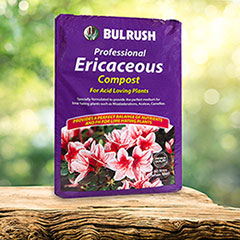

















The Complete Blueberry Growing Selection
- Tasty, cost-effective and tough, this bundle contains everything that you need to get going and growing.
- Save a small fortune compared with supermarket prices - pick up to 5kg of fruit PER BUSH once established, saving well over £100 a year against enormous supermarket prices!
- Perfect for a patio or balcony.
- Berries packed with vitamins and antioxidants.
- Supplied as a complete collection ready for planting up, including 3 x Blueberry plants in 9cm pots, 3 x Metallic effect square planters and a 60L bag of Ericaceous Compost.
Product Description
Health experts and top chefs have been raving about blueberries for years and now you can grow your own bountiful crops with this complete and easy bundle, saving a fortune against supermarket prices! Eat your blueberries fresh from the bush - delicious, sweet and juicy - or use them in jams and puddings. We’re giving you three top-performing varieties: early cropping heavy fruits; juicy mid-season berries; and late season blueberries.
- Tasty, cost-effective and tough
- The complete bundle includes three potted blueberry plants, three decorative plastic pots and 60 litres of compost
- Save a small fortune compared with supermarket prices
- Perfect for a patio or balcony
- Berries packed with vitamins and antioxidants
What Is Supplied
Plant Information
Top Tips
Cover plants with netting when in fruit, otherwise you'll just end up feeding the birds!
Pick over the plants several times as not all the fruit ripens at the same time.
Fruits can be left on the bush for a few more days after they turn blue for a more intense and complex flavour, when they'll also easily pull away from the cluster.
Although self-fertile and able to produce a good crop on their own, blueberries yield much more heavily if planted near another one.
Care Guide
- Plant in well-drained, acidic soil in a sunny, sheltered spot.
- If your garden soil has a pH over 5.5, your blueberry is best grown in a pot, in ericaceous soil. Keep it well-watered - don’t allow the soil to dry out.
- Water blueberries with rainwater if you can as tap water will gradually raise pH levels.
- Feed every month with a liquid fertiliser for ericaceous (lime-hating) plants.
- If growing blueberries in the garden, add plenty of organic matter such as pine needles or composted conifer clippings. Avoid farmyard manure as it will scorch the roots.
- Pruning is rarely needed in the first two years. After that prune in late Feb – early Mar, aiming to remove a proportion of old wood every year. Two year old wood is the most productive.
- Take out any damaged, dead, and diseased wood and prune out low branches that will lie on the ground when full of fruit.
| Jan | Feb | Mar | Apr | May | Jun | Jul | Aug | Sep | Oct | Nov | Dec |
|---|---|---|---|---|---|---|---|---|---|---|---|
























